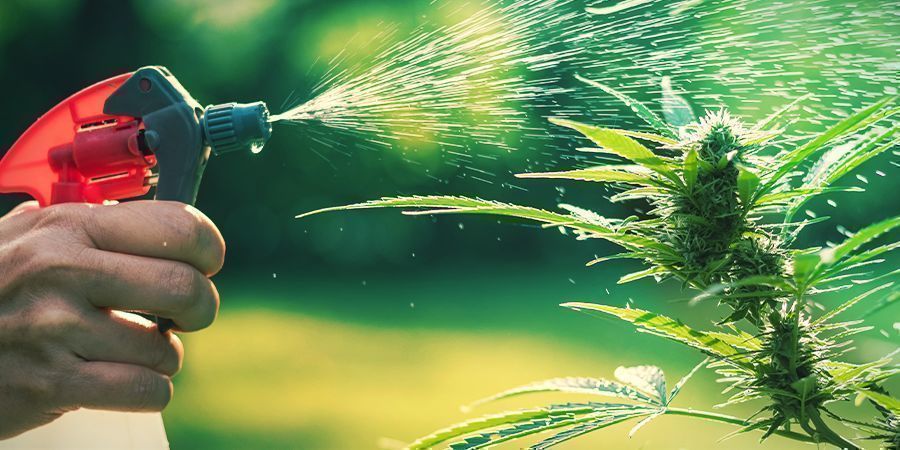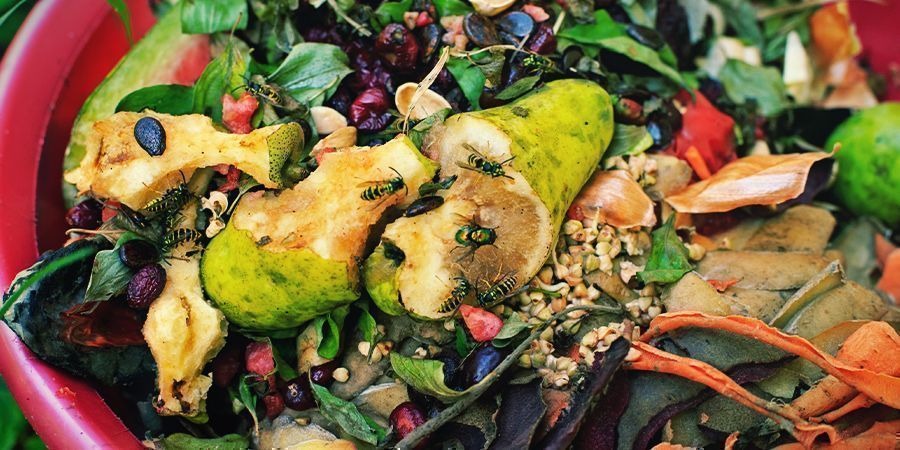
Compost Tea: The Natural Booster For Your Cannabis Plants
Compost tea is a great addition to any outdoor grower’s toolbox. It is a concentrated organic liquid that feeds and strengthens your hungry beauties - it’s well worth the effort!
Compost tea, as the name suggests, is created by brewing organic compost into an organic liquid feed. For some organic growers, it is a nice addition to boost growth; but for growers who have gone off the grid, there is no living without it - it is the ultimate in self sustainable feeds.
When made properly, the brown soup contains all of the nutrients your cannabis plants ever need. It allows organic growers a viable alternative to shop bought chemical feeds when it comes to giving the crop a food boost. Compost tea is, in essence, home made fertilizer. It is the perfect solution for the grower who wants to keep the crop pure and natural.
Compost tea doesn’t only act as a feed though, it improves the quality of the soil, adding and boosting the micro-organisms within it, and helping protect the plants from mould, disease and pests. Also, it is the ideal pre-grow soil drench as well as an awesome supplement during growth.
Protecting your marijuana with compost tea

Organic compost, much like any unpasteurized high quality soil, is full of bacteria and fungi that work in tandem with cannabis to boost its growth by increasing nutrient uptake and retention, (see our post The Best Outdoor Soil Mix for more info). These micro-organisms not only help cannabis to absorb nutrients more efficiently, but also protect from disease. One way bacteria and fungi manage to do this, is by eating the food that would otherwise be eaten by disease causing organisms. As a consequence, they starve and die off. This makes compost tea not only a great addition to soil, but also valuable when applied to the top parts of the plants. Many organic growers will spray the tea as a preventative measure. It can be applied every other week, helping stave off disease. To avoid damage to the buds, it is best to only use the spray during the vegetative period.
You may be thinking, if compost contains these organisms naturally, why should I need to make a liquid? Well, the process of brewing compost tea boosts the amount of beneficial organisms massively, to numbers you would not find in normal organic compost – effectively pumping it up into a living and highly concentrated cannabis protection machinery! It’s basically organic compost on steroids. How do I make this wondrous brew I hear you ask? Read on!
Turning compost into tea
To start with, you will need some high quality organic compost. You can either use shop bought varieties, or better, use your own compost (see our post How To Make Your Own Compost for more info).
You will also need:
- Water
- An aquarium air pump (the more air outlets the better)
- A gang valve (a piece that distributes the air)
- Tubing (to attach to the pump)
- Unsulphured organic molasses
- 2 Large plastic buckets (about 20 liters each) – one to store de-chlorinated water and the other to brew the tea
- Any old pillow case or pantyhose to strain the tea
- Any other addition beneficial ingredients you may want (such as seaweed and bat guano)
Note: you can expect about 10 liters of tea as a result of this process.
Brewing your tea

-
Firstly, it is important to use water without chlorine. If you are using water from a mains supply, chances are it will contain a small amount of chlorine to ensure it remains sterile for human consumption. Unfortunately, even small quantities of chlorine kill the micro-organisms you want to breed. To de-chlorinate your water, fill one of your buckets and use the aquarium pump to bubble air through it for 48 hours. This will remove the chlorine.
-
In your other bucket, attach the outlets of the pump to the gang valve using tubing, and then bury the tubes coming from the gang valve at the bottom of the bucket. The more outlets the better, but 3 is the minimum.
-
Fill half of the same bucket with organic compost and any other additions you may want in there. Make sure it is not too compacted – you want it all to be lose for aeration.
-
Fill the bucket to the top with your de-chlorinated water, and turn on the air pump.
-
Add in about 30 grams of molasses, and using a stick, stir vigorously to ensure the molasses reaches the bottom of the bucket. Molasses acts as extra food for the micro-organisms, helping them breed in large numbers.
-
Using the stick, ensure that the bubblers are still at the bottom of the bucket. If not, push them back down.
-
The mixture should be left to brew for 3 days, stirring a few times each day to keep the mixture agitated, (don’t forget to ensure that the bubblers remain at the bottom throughout the process).After 24 hours you should begin to see a foam beginning to develop on the surface, this means that the micro-organisms are breeding, and everything is going according to plan.
-
After 36 hours, using your pillow case or pantyhose, strain the liquid into your other bucket to remove the solid matter.
There you have it! You now have a rich compost tea ready to use. It should be used straight away to either feed your cannabis, or spray it on them for pest and disease prevention. Prior to a grow, you can also drench your soil in it to boost its quality.
Compost tea should be used right away, otherwise the micro-organisms will drown in the water.
Ideally, to help prevent disease and keep them soil as rich as it can be, the process should be repeated every two weeks or so.
Troubleshooting tips:
Organic growing is an art form as much as it is a science, and sometimes things don’t always work as you had hoped. If you are struggling to get the results you want from you tea, or it looks like it has died, don’t despair! It takes practice! Here are a few tips for the next attempt:
-
Ensure that the water is fully de-chlorinated. Water that still contains a small amount of chlorine is the most common reason for a compost tea brew to fail.
-
Make sure that your ingredients are not too compacted in the bucket, and that the bubblers always remain on the bottom of the bucket.
-
Stir the bucket more frequently.
-
Try adding in slightly less compost and a bit more molasses.
-
 4 min
20 February 2019
Molasses And Cannabis: Taking Your Soil To The Next Level
Molasses is a powerful, yet often overlooked tool when it comes to growing cannabis. Properly used, it can strengthen and boost the very foundation of your grow.
4 min
20 February 2019
Molasses And Cannabis: Taking Your Soil To The Next Level
Molasses is a powerful, yet often overlooked tool when it comes to growing cannabis. Properly used, it can strengthen and boost the very foundation of your grow.
-
 4 min
31 December 2018
What's The Difference: Synthetic Vs. Natural Fertilizer
Synthetic vs organic fertiliser is a heavily debated topic when it comes to growing cannabis. So let’s take a look at the advantages and disadvantages of each.
4 min
31 December 2018
What's The Difference: Synthetic Vs. Natural Fertilizer
Synthetic vs organic fertiliser is a heavily debated topic when it comes to growing cannabis. So let’s take a look at the advantages and disadvantages of each.
-
 4 min
14 December 2018
Top 5 Natural Pest Repellents For Cannabis
Make sure your organic marijuana beauties stay that way. These top 5 organic pest control methods will ensure your weed remains natural and untouched by nasty chemicals.
4 min
14 December 2018
Top 5 Natural Pest Repellents For Cannabis
Make sure your organic marijuana beauties stay that way. These top 5 organic pest control methods will ensure your weed remains natural and untouched by nasty chemicals.
-
 6 min
5 September 2018
What Is Recycled Organic Living Soil (ROLS)
ROLS techniques allow you to create a self-sustaining soil biosphere in your garden. Save money on pesticides and fertilisers, improve the health of the environment, and enhance the quality of your...
6 min
5 September 2018
What Is Recycled Organic Living Soil (ROLS)
ROLS techniques allow you to create a self-sustaining soil biosphere in your garden. Save money on pesticides and fertilisers, improve the health of the environment, and enhance the quality of your...














 United States
United States










